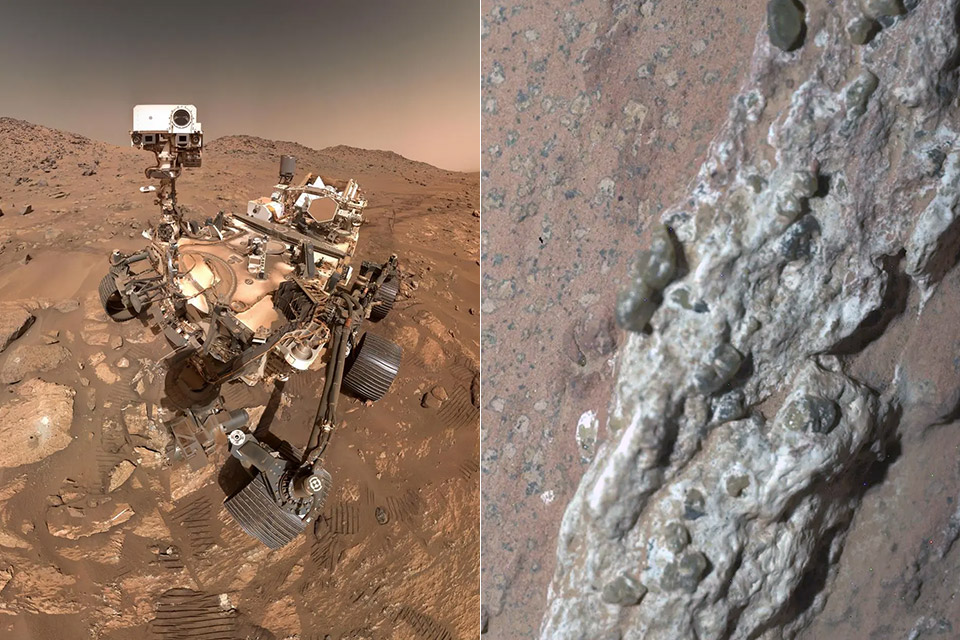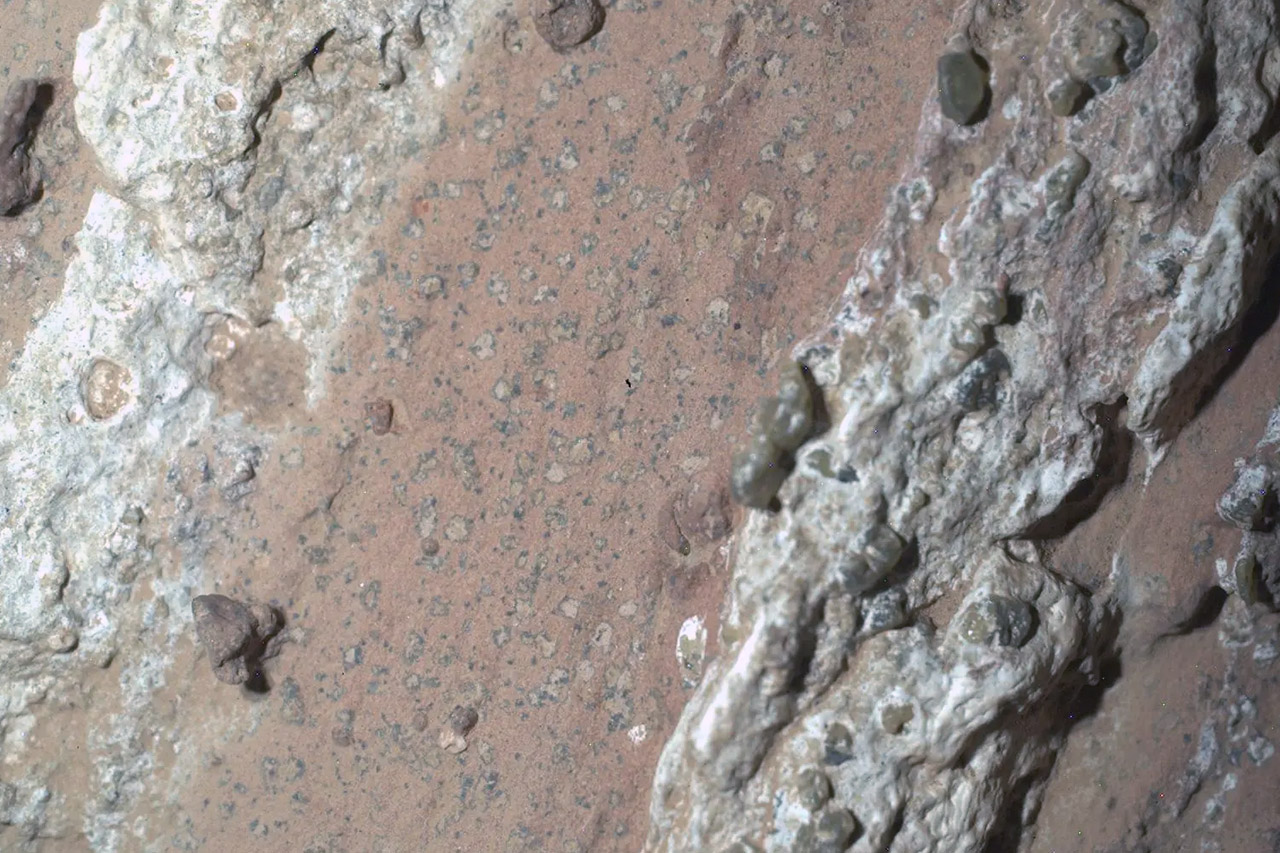Mars’ Leopard-Spotted Rock Could be Clearest Sign of Ancient Life Yet


In July 2024, NASA’s Perseverance rover drilled into a reddish arrowhead shaped rock in Jezero Crater on Mars, which was once a big lake. Cheyava Falls, named after a Grand Canyon waterfall, has everyone in a tizzy. Its surface is covered in what the scientists call “leopard spots” and “poppy seeds” and might just have ancient microbial life hidden inside.
Perseverance has been in Jezero Crater since February 2021 looking for signs of past life in a place that was formed by water billions of years ago. Cheyava Falls in the Bright Angel formation along the Neretva Vallis river valley stood out. Its fine grained mudstone made from ancient clays and silt is the type of rock that often preserves microbial fossils. When they looked at it, they found a chemical mix that raised an eyebrow: organic molecules, iron, phosphate and sulfur all buried in a matrix of calcium sulphate veins. These are the materials that in Earth’s marshes or lakebeds often indicate life’s handiwork. But Mars is not Earth and this is where the story gets interesting.
Sale

LEGO Technic NASA Mars Rover Perseverance Advanced Building Kit for Kids Ages 10 and Up, NASA Toy with…
- Feed a passion for science and technology – Kids can learn more about the challenges of space exploration with this LEGO Technic NASA Mars Rover…
- Conduct a test flight – This advanced building kit for kids ages 10 and up includes a buildable toy version of NASA’s Ingenuity helicopter, which…
- AR brings the mission to life – The accompanying augmented reality app experience lets kids dive into the details of the rover and its mission
Everyone was drawn to the rock’s weird features: small black specks called poppy seeds on the surface and bigger, irregular rings called leopard spots with dark rims of iron-rich minerals like vivianite and greigite around whitish centers. On Earth these minerals form when bacteria consume organic materials and chemical reactions leave behind these patterns. Perseverance’s SHERLOC sensor which looks for organic molecules found carbon-based chemicals in the rock – the building blocks of life as we know it. Meanwhile, the PIXL instrument, a high-tech X-ray probe, found iron and phosphate in the leopard spots, signs of processes that may have driven ancient Martian life.
Scientists believe Cheyava Falls started as a muddy mixture of sediment and organic material billions of years ago and gradually cemented into rock. Later, water seeped through cracks and formed calcium sulfate veins and started the chemical processes that created the leopard spots. Hematite, the stuff that makes Mars red, may have played a part in interacting with organic material to produce iron and phosphate and those black rings. It’s a great story but there’s a catch: the same minerals can grow without life using only geological processes.

Perseverance has stashed the Sapphire Canyon sample, one of 27 rock cores, in a canister waiting for a future mission to bring it back to Earth. That’s where things get fuzzy. NASA’s Mars Sample Return mission to retrieve these samples is in jeopardy under President Trump’s 2026 budget plan with costs ballooning to $11 billion. Sean Duffy, acting NASA administrator, says they’re looking for faster, cheaper ways to get the samples back but details are scarce. Meanwhile China is planning a 2028 mission that might beat NASA to the punch and drop Martian rocks on Earth by 2031.
Mars’ Leopard-Spotted Rock Could be Clearest Sign of Ancient Life Yet
#Mars #LeopardSpotted #Rock #Clearest #Sign #Ancient #Life








